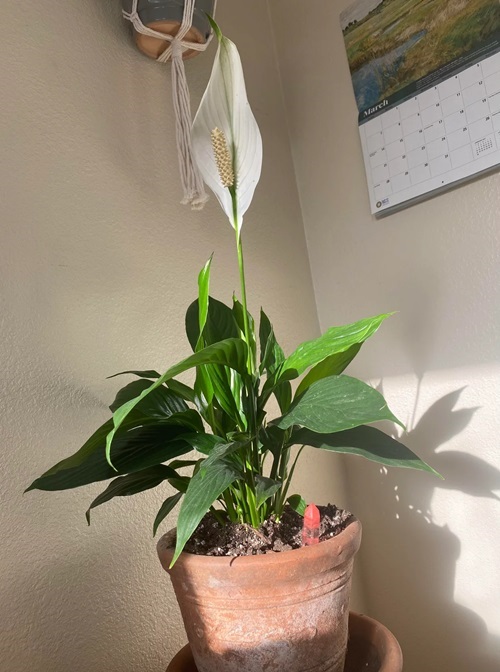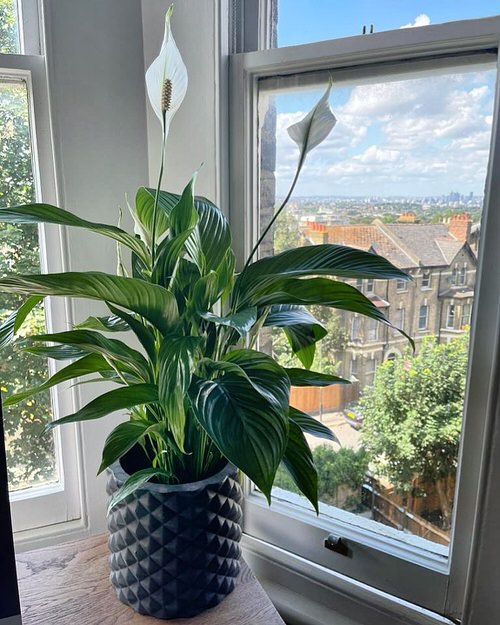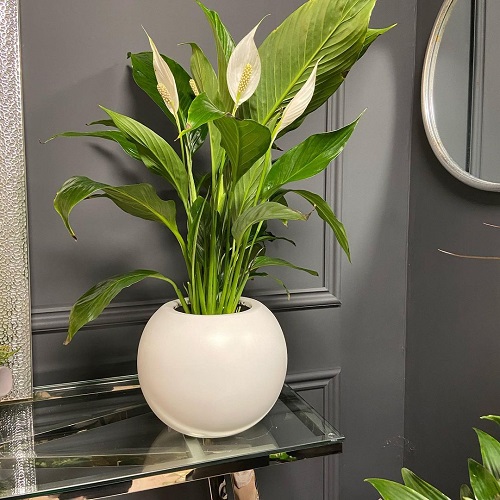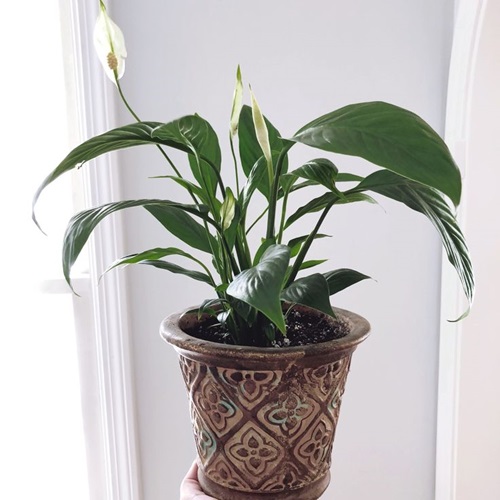Here are Things to Do with your Peace Lily in Fall and winter to keep it thriving and secure recurring, robust blooms!
Peace Lilies are stunning tropical plants with glossy green foliage and long-lasting flower stalks that float above. The white bracts turn pale green and linger for at least a month. Blooming freely from spring, these accent houseplants need some care in fall and winter to thrive!
Types of Peace Lily
A photoperiod study by the University of Florida on peace lilies (spathiphyllum) to determine how day and night lengths influenced blooms revealed that several factors, such as the plant’s “type” and “age,” affected flowering response. This brings us to the different types of peace lilies.
The most classic types are season-dependent varieties such as Petite, Tys Pride, and Viscount. They bloom in spring and early summer but set buds the previous December and January when the days are short and nights long.
Cross or multi-seasonal peace lilies such as Connie, Little Angel, and Mini bloom more than once a year. Another type of blooming reaction that emerged was the age-dependent ones, which flowered continuously after reaching a certain maturity—UF474-1, UF576-14, and UF545-98!
So, if you’re looking for peace lilies that bloom multiple times a year, it helps to know the type and its characteristics. As cold weather approaches, let’s explore what you should do with your peace lily during fall and winter.
Things to Do with Peace Lily in the Fall
1. Prune Lightly
After your peace lily blooms in spring and summer, it may bloom again in fall if all needs are met. As the flowers fade, snip off the stems at the bottom to remove spent ones. Also, gently remove brown and yellow leaves and wilting parts.
This enables the plant to focus and conserve its energy during winter dormancy.
2. Bring it Indoors
Native to tropical Amazon rainforests and parts of southeastern Asia, Peace Lily is hardy to USDA zones 10-12. However, come fall and winter, your plant may not be equipped to withstand cold drafts, frosty earth, and sudden temperature dips.
Fall is a good time to bring your peace lily indoors if your region experiences outdoor cold below 55 F (13 C) persistently. This plant needs consistent temperatures of 65-80 F (18-27 C) to do well, so ensure your indoor space enjoys these conditions without fluctuations.
3. Provide Filtered Light

Now, when you move your plant indoors, especially in colder weather, the amount of light it receives may decrease. Peace lily is an understory plant that gets filtered light from the tree canopy. It can tolerate all shade conditions but prefers diffused daylight of at least 2-4 hours daily.
An east-facing window is an ideal place with a mix of shade and light. And don’t forget to rotate the plant regularly so all parts receive equal sunshine. You can also use grow lights for this.
4. Keep it Humid

These tropical stunners love and need 50-60% humidity for lush leaves and blooms. When humidity drops during fall and winter, simply mist the plant or use a humidifier to raise humidity levels.
You can also place the pot in a tray filled with water and pebbles. Read more ways to increase humidity for houseplants.
5. Club with Companions
Trailing from the point above about humidity, placing peace lily alongside compatible companions like spider plant, boston fern, snake plant, pothos, and crotons—plants with similar needs.
These create a cozy environment with ample humidity, and some plants, like ferns, also deter certain pests that can afflict your peace lily.
6. Check for Pests
Certain pests like mealybugs, aphids, and spider mites can affect your peace lily even during fall and winter. Look for signs, such as small clusters on the leaves or sticky residue. Many pests lay eggs that go unnoticed; they hide on the undersides of leaves or in the soil.
As the weather cools down, some pests and their eggs may go dormant, only to become active again in spring when temperatures rise. To prevent infestations, make sure your plant gets good air circulation and ample indirect light.
7. Wipe down Leaves
Your peace lily may be heading towards dormancy, but that’s all the more reason to keep it clean! Dust, fungus, pests, all enjoy the negligence that arrives with winter, when all your attention goes to other plants with winter blooms.
It is common for leaves to start browning at the tip with poor drainage, or have white webs and sticky residue due to pests. Gently wiping down the leaves with rubbing alcohol, insecticidal soap, or just tepid water even, will prevent the problem from getting out of hand.
8. Cut Back on Watering

As it prepares for dormancy, the plant really doesn’t need as much water in the colder months of fall and winter. With not enough sun to dry out the soil, overwatering could lead to fungal issues, root rot, and wilting foliage.
Water only if the soil is dry to the touch, and ensure it is tepid to avoid shocking the plant. Use only well-draining soil mix, and make ample drainage holes in the container.
9. Stop Fertilizing
A crucial thing to “not” do in fall is fertilize! Your peace lily is preparing to slow down, and any extra nutrients in the soil will actually stress it out rather than coax some surprise winter blooms.
Let your plant chill during this time so there is no build-up of salts in the soil, which could damage roots eventually. And when it’s spring, your peace lily will be well-rested, well-cared for, blooming, and thriving for years to come!
10. Give a Dose of Gibberellic Acid
You can chemically induce the plant into flowering if you’re desperate for all-season blooms. Gibberellic acid is a naturally occurring plant hormone extracted from fungi that can boost flowering in peace lilies, if you apply a foliar spray in 125, 250, or 375 ppm.
You can buy it from online stores or gardening centers. Always follow the instructions on the label before using it. This hormone helps start the growth of flower buds; the flowers appear at least 2-3 months later.
Note: Remember that plants are quite sensitive to this hormone, so use it rarely and avoid overuse, as it can kill the plant.





